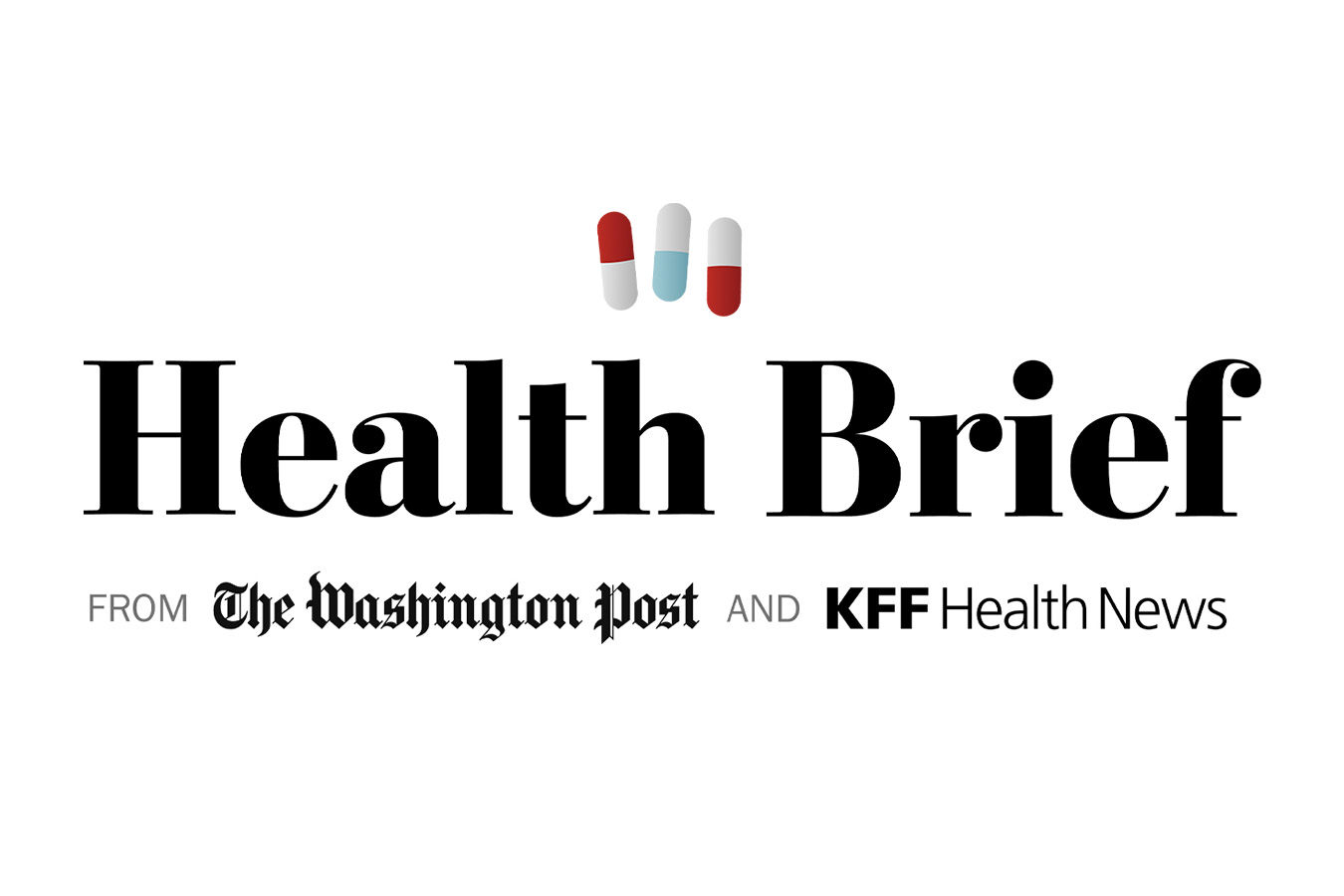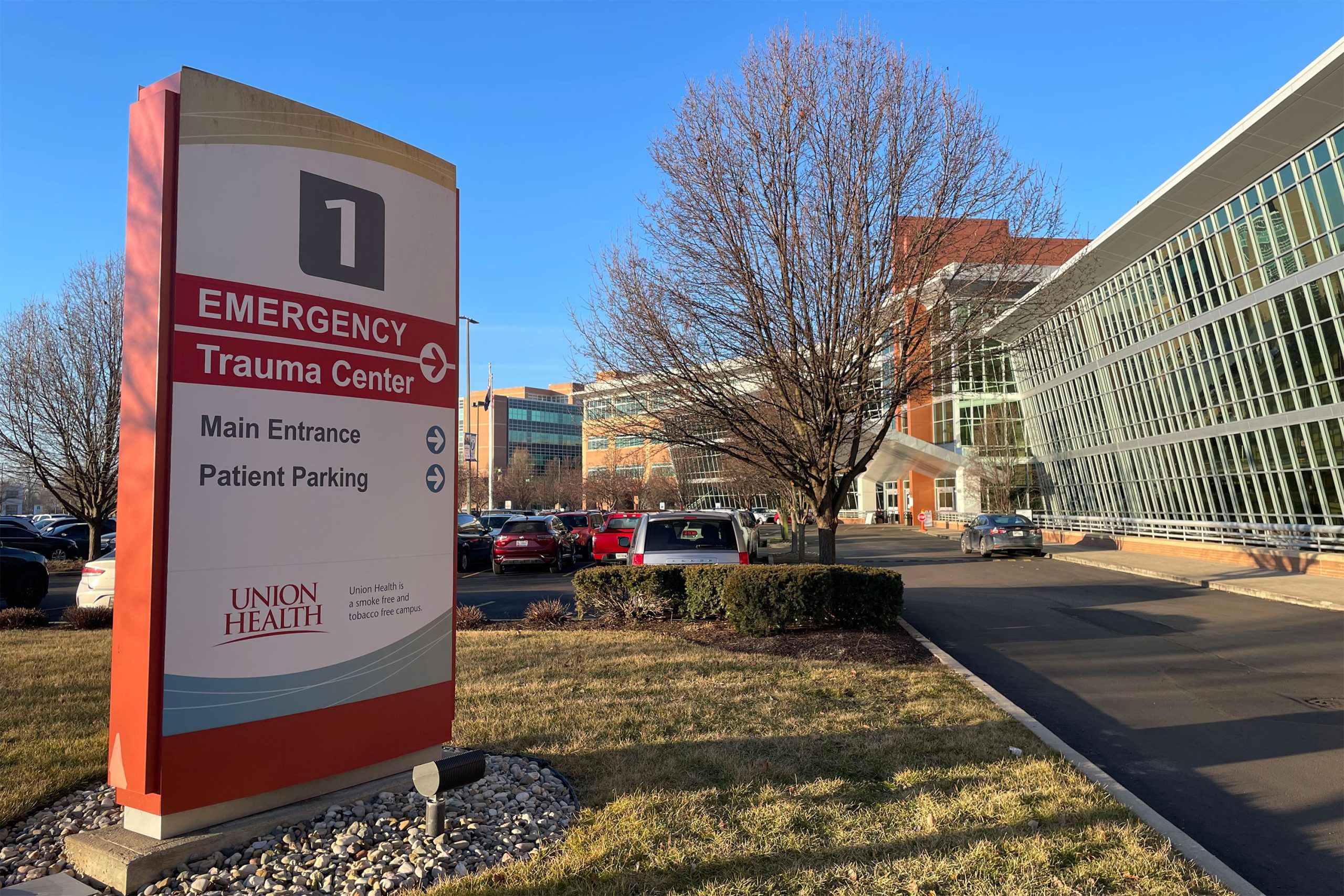How did three siblings who took identical ambulance rides (from the same car wreck to the same hospital) end up with three wildly different bills? The answer lies in the No Surprises Act.
That law has protected patients from some of the most outrageous out-of-network medical bills since it took effect in 2022 — except when it comes to ground ambulances. Host Dan Weissmann and producer Emily Pisacreta unpack the story with Bram Sable-Smith of KFF Health News and PIRG’s Patricia Kelmar and share what to do if you get hit with an out-of-network ambulance bill.
Dan Weissmann
Host and producer of “An Arm and a Leg.” Previously, Dan was a staff reporter for Marketplace and Chicago’s WBEZ. His work also appears on All Things Considered, Marketplace, the BBC, 99 Percent Invisible, and Reveal, from the Center for Investigative Reporting.
Credits
Emily Pisacreta
Producer
Adam Raymonda
Audio Wizard
Ellen Weiss
Editor
Click to open the Transcript
Transcript: How a Surprise Bill Can Hitch a Ride to the Hospital
Note: “An Arm and a Leg” uses speech-recognition software to generate transcripts, which may contain errors. Please use the transcript as a tool but check the corresponding audio before quoting the podcast.
Dan: Hey there —
I have been following the world of medical bills for more than four years now — which makes me still a newbie, really. And here’s one thing that’s surprised me — beyond how much there is to know, and how deep the problems go.
It’s this: Sometimes, some things do actually change for the better.
Like, when I started, one of the most outrageous problems was something called “surprise bills”:
That’s when you go someplace, like a hospital, that takes your insurance, and then, SURPRISE! You get a bill from somebody there who says they DON’T take your insurance, and they feel free to charge you ANY ridiculous amount they want, and your insurance may cover a LITTLE of it, or none of it.
I was like, “I will be making episodes about this outrage for a long time.”
Except, at the end of 2020, about two years in for me, Congress actually did something about this outrage. They passed a law called the No Surprises Act.
It said, if you went somewhere in network — someplace your insurance covers — then any bill you get from anybody there? You should be covered as if they were in network. So, they don’t take your insurance? Not your problem. They’ve gotta work something out with your insurer. And if they can’t, an arbitrator steps in.
The law went into effect at the beginning of 2022. And: Surprise! In a lot of ways, it’s working. One study shows that it’s preventing a million of these surprise bills every month. A million. Every month.
Except, of course, nothing’s perfect. There are a lot of nuances we could look into, but one thing really stands out: There’s actually a hole written into the law that you could drive an ambulance through.
We’re gonna look at how that hole got there, what it means, and what MAYBE could get done about it.
This is “An Arm and a Leg,” a show about why health care costs so freaking much and what we can maybe do about it. I’m Dan Weissmann. I’m a reporter, and I like a challenge. So our job on this show is to take one of the most enraging, terrifying, depressing parts of American life and bring you something entertaining, empowering and useful.
And today we’re talking about ambulances. With help from producer Emily Pisacreta.
Emily: Wee-oo-wee-oo
Dan: Haha! Emily you have spent the last few weeks looking at this whole deal
with ambulances. Why don’t you take it away?
Emily: Here’s a story that illustrates how weird ambulance bills can be. It’s a totally wild installment of “Bill of the Month,” the series from NPR and our co-producers KFF Health News.
I talked to the KFF reporter who did the story, Bram Sable-Smith, a Midwest correspondent there.
Bram Sable-Smith: I kind of focus on issues that face consumers, people who are living their lives.
Emily: One person who was just living her life was a woman named Peggy.
Bram Sable-Smith: She’s 55 years old. She works in a fine jewelry store in the Chicago suburbs. And her two siblings, Jim and Cynthia, were coming to visit her.
Emily: So Peggy and her siblings are in the car. They’re driving out into the country, going to see some horses. They’re out on this country road, they come up to an intersection, and all of sudden, bam, the car gets hit by a truck.
Bram Sable-Smith: It spun around and slammed into an electrical box right there on the side of the highway.
Emily: They survive, but they do get pretty banged up. Someone calls 911, and ambulances arrive. And here’s where the story goes from being scary to kinda weird. Peggy and her brother and sister need to go to the hospital.
But because an ambulance is not a bus, with seats for everyone, each sibling needs their own ambulance, and: Each of those ambulances is run by a different ambulance service. They end up at the same hospital, they get billed for the exact same services.
Bram: They were all charged for a life support fee and they were all charged a mileage fee.
Emily: However …
Bram: Months later when the bills came for the three of them, they got billed
three very different amounts for the exact same services.
Emily: And the bills were all out of network, and all pretty substantial. Especially Peggy’s. Cynthia’s bill was $1,250, Jim’s $1,415, and poor Peggy? Who invited her siblings on this ill-fated drive?
Bram Sable-Smith: Peggy’s bill was for $3,606.
Emily: That’s almost three times what her sister got charged. And these are all heavy-duty bills. Higher than what research shows is the average out-of-network ambulance bill.
But the fact that they’re out of network, like not billed to their insurance? That’s not an outlier. It’s estimated that 71{dec8eed80f8408bfe0c8cb968907362b371b4140b1eb4f4e531a2b1c1a9556e5} of ambulance bills are out of network on commercial plans. Which means 71{dec8eed80f8408bfe0c8cb968907362b371b4140b1eb4f4e531a2b1c1a9556e5} of the time …
Bram Sable-Smith: … ambulances are essentially able to charge whatever they want.
Emily: Result? These random ass charges.
Dan: Hold up. So this is exactly the kind of thing the No Surprises Act was supposed to prevent: out-of-network bills from someone you didn’t pick yourself. You know, like an ambulance. And you’re saying ambulances are especially unlikely to be covered by your insurance. But they’re not governed by the No Surprises Act.
Emily: That’s right.
Dan: OK, so why did Congress leave ambulances out of the No Surprises Act?
Emily: I mean, I had the same question. It’s like … Congress was able to juggle all the demands of the insurance lobby and health care providers including, I should mention, AIR ambulance companies
Dan: Wait, that’s helicopter rides?
Emily: Yep. Helicopters, air ambulances, that were charging tens of thousands of dollars a ride. Congress dealt with them here, but, like … not regular degular ambulances? So yeah, why not?
And the answer has to do with who actually runs ambulances in the U.S. And how they get their funding.
That story starts decades ago. You ready for this?
Dan: What, a ride in the Wayback Machine? Yeah, I mean have you met me? I was born ready for this.
Emily: OK, sea tbelts on. Once upon a time, about 60 years ago …
Patricia Kelmar: We really didn’t have an emergency transportation system for
medical care in the U.S.
Emily: That’s Patricia Kelmar. She runs health care campaigns at a consumer-advocacy organization called the Public Interest Research Group. She lobbied for the No Surprises Act. And when we talked, we got into the history of ambulances, because everything has an origin story. She says a national ambulance system started with a big federal report in 1966. And here’s what it said:
Patricia Kelmar: We were losing a lot of people who were having medical emergencies at home or out in the community and didn’t get to the hospital fast enough.
Emily: The report identified accidental injuries as the leading cause of death for Americans in the first half of their life span. It said more Americans died from motor vehicle accidents in 1965 than American troops in the Korean War.
Patricia Kelmar: So this report really opened the eyes of public health officials, and there was a movement in the early Seventies to create a national emergency transportation system.
Dan: Wait! This reminds me of a show that was on when I was a kid called Emergency! with an exclamation point.
Emily: Yeah totally!
[Emergency! theme]
[Clip from Emergency! plays]
Dispatcher: Rampart Emergency?
Paramedic 1: Rampart, this is Squad 51.
Dan: Yeah! Kids I knew had Emergency! lunchboxes
Emily: Yeah, it was a whole cultural moment. It seems like this apparently had American audiences on the edge of their seats.
[Clip from Emergency! plays]
Dispatcher: Go ahead, 51.
Paramedic 1: Rampart, we have a male patient here, age 17. He has, uh, acute abdominal pain.
Emily: That first aired in 1972.
[Clip from Emergency! plays]
Paramedic 1: Patient’s, uh, ingested two loaves of raw dough. Ambulance has just arrived.
[Emergency! Sound]
Emily: Lawmakers had a vision to match. In 1973, Congress passed the Emergency Medical Services Systems Act, to bring high-quality emergency care to every part of the country.
Patricia Kelmar: It was developed thinking about regions so that we didn’t have too many ambulances, but we had enough ambulances to serve different populations, and the best part was there was federal funding to make this happen.
Emily: But then in the ’80s … the structure of that funding changed. Now states would get block grants, big chunks of federal health care dollars that they would decide for themselves how to use.
Patricia Kelmar: And so every community then, throughout our country, responded to this change in the funding system by … understanding that we still need ambulances, but funding it in different ways.
Emily: Which is why in some places you’d never get a bill for an ambulance. The local city or county governments owns and operates it, and a mix of funding streams, including local taxes just cover it.
And in other places, you certainly would get a bill. And it wouldn’t be from the county, but it’d be from a hospital, or a for-profit EMS company. Because they run about 40{dec8eed80f8408bfe0c8cb968907362b371b4140b1eb4f4e531a2b1c1a9556e5} of this landscape too, and some of those companies are even owned by private equity.
And still in other places, you get volunteer ambulance companies running bake sales or even raising money on GoFundMe.
In the case of Peggy and her siblings, just by virtue of where they got into the accident, they ended up in publicly run ambulances from three different jurisdictions, each with their own funky funding, each with their own unique pricing scheme.
Dan: Huh. So that’s where things stood with ambulances when Congress was cooking up the No Surprises Act. Coming right up: Why did that lead Congress to punt? And what might come next?
[midroll]
Dan: This episode of “An Arm and a Leg” is produced in partnership with KFF Health News. That’s a nonprofit newsroom covering health care in America. Their work is absolutely terrific; I love partnering with them. We’ll have a little more information about KFF Health News at the end of this episode.
[midroll music fades out]
Dan: OK … So, since the 1960s, we’ve got ambulance care around the country that meets certain standards — great. But how the ambulances get funded, who owns them, and how much you get billed after it drops you off, all these things depend on location — not so great.
But, you know: hospital funding, hospital bills … that’s not standard across the country, either. Why did Congress apply the No Surprises Act to hospitals, but not ambulance rides? Emily, looking at you here.
Emily: Hey, look, even experts have a tough time with that one. Here’s an economist named Loren Adler from the Brookings Institution. He researches health insurance and he watched the whole No Surprises Act take shape.
I asked him: So, no ambulances. Why’s that?
Loren Adler: So, I’m not sure I can give you a super satisfactory answer. I don’t really think there’s a great reason. Uh, I can give the sort …
Emily: You don’t have to … you certainly don’t have to defend …
Loren Adler: Yeah, um, that’s true.
Emily: Actually he did have a couple of reasons. He started with: who actually runs ambulance services most of the time.
Loren Adler: About 60{dec8eed80f8408bfe0c8cb968907362b371b4140b1eb4f4e531a2b1c1a9556e5} of emergency ground ambulance transport is actually billed by local governments or fire departments.
Dan: So “Big Ambulance Incorporated” didn’t steamroll Congress?
Emily: Not according to Loren.
Loren Adler: As much as observers might think that lobbyists and sort of stakeholder industry have a lot of say over Congress, I’m not objecting to that characterization. Uh, you know, calls from local lawmakers and mayors and fire department chiefs have even more weight.
Dan: So, OK. We’re talking local public servants. Like, Leslie Knope from Parks and Rec, if she were a fire chief.
Emily: Yeah, and as Loren might say: A high ambulance bill looks like an outrage to you, but to her it looks like something else.
Loren Adler: It is effectively a source of local government revenue.
Dan: So Congress was hearing from Leslie Knope, “Are you trying to bankrupt
my little town of Pawnee?” And they were like, “OK. So, no ambulances then.”
Emily: Right. Loren also sees a much nerdier factor at play.
Dan: Hit me.
Emily: Remember, whether it’s Leslie Knope or “Big Ambulance Inc.” running them, local ambulance services are overwhelmingly out of network.
And so according to Loren, the mechanisms that make the No Surprises Act work would be hard to apply.
Loren Adler: The sort of structure of the No Surprises Act is all kind of based around this median in-network price,
Emily: Did you catch that? Median in-network price.
That is, Congress had to decide: If we’re gonna make a law where an out-of-network provider can’t just charge Whatever They Want anymore in these situations, then … what are they supposed to get paid? Congress said …
Loren: We’re gonna tell insurers you have to pay whatever your sort of average in-network price was for the service.
Emily: But with so few in-network providers, there is no reliable, average in-network price.
Dan: OK. That was super-nerdy. And I’m gonna note that even if Leslie Knope and a bunch of nerds led the charge here, Big Ambulance Inc. got the benefit too. So what now?
Emily: Well, Congress did recognize that they were leaving this giant sign up at the door that said “Welcome Surprise Ambulance Bills.” And they said, OK, we can’t figure this shit out now. But let’s have a bunch of experts get together and let’s have them write us some recommendations for later. They told the Department of Health and Human Services: Go form a committee.
And now Loren is on that committee. So is Patricia Kelmar — the consumer advocate we heard from earlier.
Patricia Kelmar: The advisory committee is called the Ground Ambulance and Patient Billing Advisory Committee. If that’s not a mouthful, I don’t know …
Emily: Yeah. Yep.
Patricia Kelmar: But it’s, it’s probably indicative of how complicated finding solutions to surprise billing can be.
Emily: Patricia and the panel, they first met in early May, and the law says they have 180 days after that to come up with some policy recommendations for lawmakers to take under advisement. After that, it’ll be up to Congress to take action again.
Dan: And, I mean, not to be a cynic, but it took years to get the No Surprises Act passed. What if I decide not to hold my breath until Congress does something about ambulances?
Emily: You’ll be forgiven, my dude.
Dan: So, where does that leave us? Scrounging for in-the-meantime advice, right?
Emily: Yep. Patricia has some tips.
Patricia Kelmar: The first thing we recommend is that you talk to both your insurer and the ambulance company and try to negotiate better coverage or lowering of the bill.
Emily: If you get your insurance through work, your HR department may be able to help. Let them know what happened and see whether they can get insurance to pay it off.
If that’s not an option, try to negotiate with the ambulance provider.
Patricia Kelmar: Always explain your financial situation. Try to work out something. I have. Patients who called me about their ambulance bills, and when they call and explain, sometimes they get a discount.
Emily: And finally, there might actually be state local laws in your area that pertain to balance bills, that include ambulances.
Dan: Ooh, I’ve got one more tip!
Emily: Mmmhm?
Dan: This one is from our pal Jared Walker. He runs a group called Dollar For. Their whole thing is helping people get financial assistance, or charity care. ‘Cause, you know, nonprofit hospitals are required to give price breaks to at least SOME people with low incomes.
And Jared says: Ambulance companies aren’t required to have those kinds of policies, but A LOT OF THEM DO.
He also says: You should look them up. Like, the specific policy for whatever company you are dealing with. Because these policies can have funny names … like “Compassionate Care Policy.” And if you don’t ask for them by name, the person you call may pretend they don’t know what you’re talking about. That’s what Jared says. So, Jared, if you’re listening, big thanks to you for those crucial details.
Emily: Cool cool cool. But none of these solutions work for everyone.
Peggy, the woman who got into an accident with her siblings? Her bill went to collections, and she had a hell of a time fighting back. The bill disappeared only after her story aired on national radio.
Dan: That one’s definitely not gonna work for everybody.
Emily: No. Which reminds me of another thing Patricia told me.
Patricia: For the ambulance committee, there’s a public portion. People can log in, they can listen, people can share their stories, tell us something about what they want us to do, and if they don’t get called on that time, they can just write a note, and let us know.
Dan: Wherever you’re listening to this, we’ll post information about how you can chime in.
Also, I found a list of 10 states that have surprise-billing protections for ambulances — including Illinois, Ohio, New York, Colorado. We’ll have a link to the list of all 10 states as well.
Emily, thank you so much for telling us all about ambulances.
Emily: My pleasure.
Dan: And I’ve got a request here. Something I could use everybody’s help with:
We are planning an upcoming episode about AI. ‘Cause we’re wondering: Can we train ChatGPT to make it easier to appeal stupid insurance denials?
And we’re gonna need … some raw material. Some stupid insurance denials.
If you’ve gotten one recently, and you’d like some help from a chatbot — and an actual human expert that we will recruit — can you please get in touch? Go to armandalegshow.com/contact.
Let us know the story. Please include the relevant documents. We won’t share your personal information without your OK, but if we use your story, we will want to talk with you, maybe put your voice on the show.
Are you game? Or: Do you know somebody who might be? Let’s get our new robot overlords working for us, you know, while we can.
And besides: I’m pretty sure the folks at the insurance companies are already trying to do the same. Let’s start catching up.
Again: The place to share is: armandalegshow.com/contact.. Thank you so much. This should be fun.
We’ll have another episode for you in a few weeks.
Till then, take care of yourself.
This episode of “An Arm and a Leg” was produced by Emily Pisacreta — with help from Lucy Little, Bella Cjazkowski, and me, Dan Weissmann — and edited by Ellen Weiss.
Daisy Rosario is our consulting managing producer. Adam Raymonda is our audio wizard. Our music is by Dave Winer and Blue Dot Sessions.
Gabrielle Healy is our managing editor for audience. She edits the First Aid Kit Newsletter.
Bea Bosco is our consulting director of operations. Sarah Ballema is our operations manager.
“An Arm and a Leg” is produced in partnership with KFF Health News — formerly known as Kaiser Health News.
That’s a national newsroom producing in-depth journalism about health care in America, and a core program at KFF — an independent source of health policy research, polling, and journalism.
And yes, you did hear the name Kaiser in there, and no: KFF isn’t affiliated with the health care giant Kaiser Permanente. You can learn more about KFF Health News at armandalegshow.com/KFF.
Zach Dyer is senior audio producer at KFF Health News. He is editorial liaison to this show.
Thanks to Public Narrative — that’s a Chicago-based group that helps journalists and nonprofits tell better stories — for serving as our fiscal sponsor, allowing us to accept tax-exempt donations. You can learn more about Public Narrative at www.publicnarrative.org.
And thanks to everybody who supports this show financially.
If you haven’t yet, we’d love for you to join us. The place for that is armandalegshow.com/support.
Thank you!
“An Arm and a Leg” is a co-production of KFF Health News and Public Road Productions.
To keep in touch with “An Arm and a Leg,” subscribe to the newsletter. You can also follow the show on Facebook and Twitter. And if you’ve got stories to tell about the health care system, the producers would love to hear from you.
To hear all KFF Health News podcasts, click here.
And subscribe to “An Arm and a Leg” on Spotify, Apple Podcasts, Pocket Casts, or wherever you listen to podcasts.









